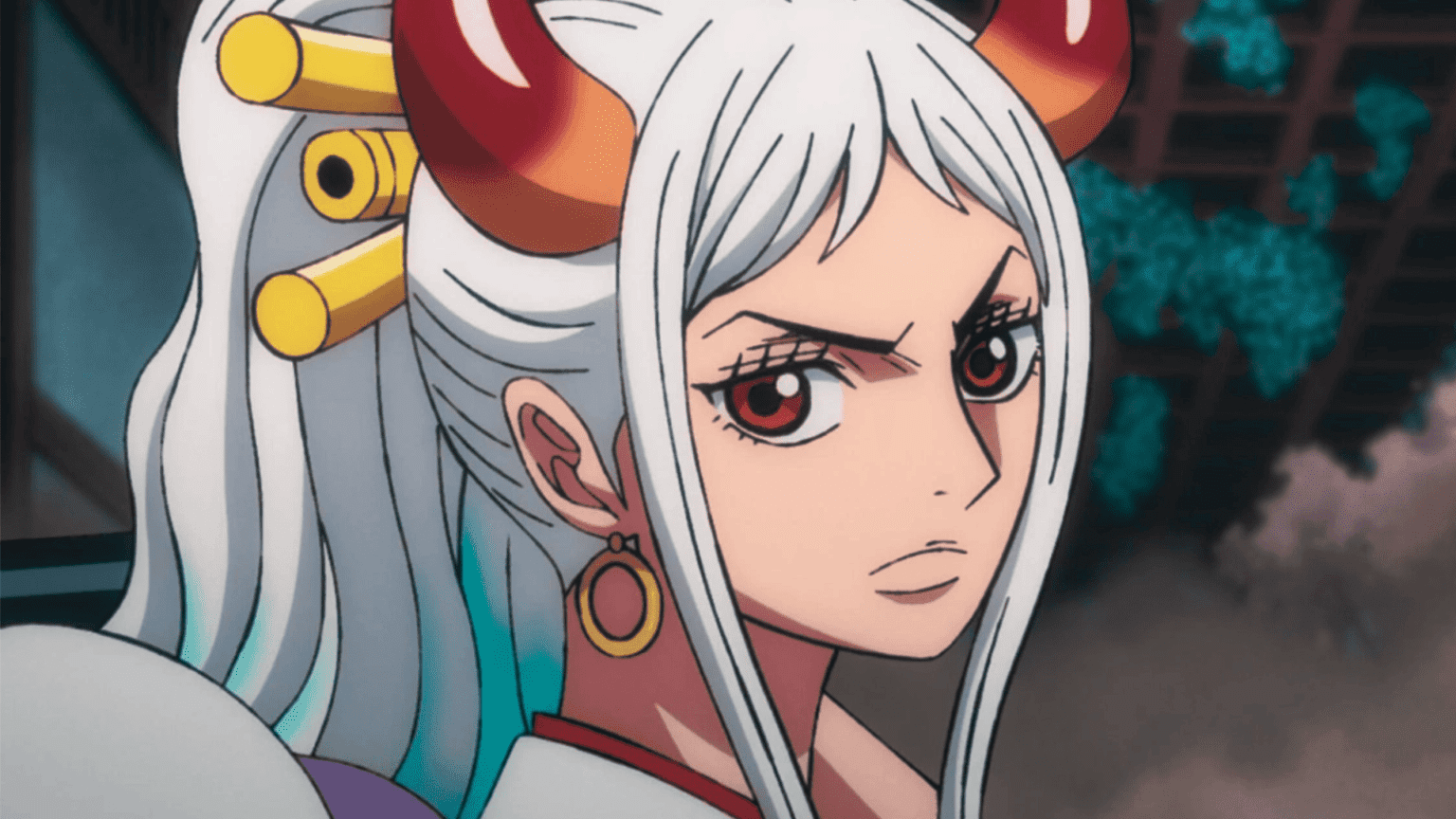The One Piece anime and manga series has grabbed fans all around the world with its diverse array of characters of various shapes, sizes, and sexes. Among the series’ wide roster of characters, however, few have sparked as much controversy and debate as Yamato.
Yamato’s gender identity remains a murky area to explore, even a hundred chapters beyond her appearance. Furthermore, adding to the complexities surrounding Yamato’s gender are the various fans and Eichiro Oda himself.
For those who want a quick, short answer without diving into the complexities: Biologically speaking, Yamato is a woman. But she identifies as a man and prefers male pronouns. While she adopts masculine mannerisms, she still dresses and styles her hair like a woman.
On This Page
Who Is Yamato In One Piece?
To understand the gender controversy surrounding Yamato in One Piece, it is crucial to first know the character. Yamato is introduced in the Wano arc of One Piece as the child of Onii Emperor Kaido. Born as Kaido’s daughter, Yamato’s upbringing took a unique turn. She has the Mythical Okuchi no Makami Devil Fruit, allowing her to transform into a wolf-like spirit with icy powers.
From a young age, Yamato developed an intense admiration for Kozuki Oden, a legendary samurai who aimed to free the Wano Kingdom from oppressive rulers. This admiration led Yamato to not only impersonate Oden, but identify as a man in certain ways, through the adoption of male pronouns and mannerisms. In fact, Yamato’s face was revealed many moments after her first appearance, centering the ambiguity in her character from the very start.
Yamato’s Relationship To Kozuki Oden
Kozuki Oden plays a pivotal role in Yamato’s life – even though the two never interacted in person. Oden’s unwavering pursuit of freedom and his fearless nature deeply resonated with Yamato, who yearned for a life beyond the confines of her upbringing.
True to the themes of freedom, and rising beyond one’s predestined situation, Yamato sought to transcend her identity as Kaido’s daughter. However, most often, this attempt to emulate Kozuki Oden seems to tie in with a form of intense hero worship rather than gender dysphoria that makes her want to be a guy.
In fact, would you believe that Yamato’s connection to Oden is so profound, that she often declares, “I am Oden,”? She aims to become him, rather than simply be like like him. This unique bond serves as both a source of inspiration and identity for Yamato, driving her to emulate Oden’s free-spirited nature. It is, in turn, this free-spirited tendency that leads Yamato to befriend Ace and Luffy later on, seeking to sail beyond the borders of Wano as they had.
Why Is There A Controversy Regarding Yamato’s Gender?
The heart of the Yamato gender controversy lies in the information presented throughout the Wano Arc of One Piece. At various points, the Yamato’s gender identity seems to conflict with what we had originally assumed. While Yamato identifies as a man, she styles her hair and dresses like a woman. However, there are several factors that contribute to the origin and continuation of the debate.
1. Conflicting Pronouns
Yamato speaks to herself using masculine pronouns such as “he” and “him,” a choice that corresponds with her wish to be like Oden. However, the characters in the series, including Kaido, frequently refer to Yamato as “his daughter” or “she,” confusing fans and readers.
2. Vivre Card Contradiction
The official Vivre Card for Yamato introduces yet another layer of complexity. It states that Yamato is biologically a girl, seemingly contradicting her chosen gender identity. This official document adds fuel to the debate, as fans grapple with whether to prioritize the character’s self-identification or the official information.
3. Bathing Scene
One Piece Chapter 1052 threw another wrench into the ongoing debate of Yamato’s gender identity. When invited to bathe with women, Yamato declines, stating, that there is no mixed bathing in the castle.
Subsequently, Yamato is seen bathing with the men, further reinforcing her identification as a man. However, the fact that she is placed in the male bathhouse creates ambiguity about how the narrative perceives Yamato’s gender in One Piece.
4. Author’s Reference
Eiichiro Oda, the creator of One Piece, has hinted at the possibility of gender ambiguity within the story itself. In chapter 945 of the manga, he referenced the character Oscar François de Jarjayes from “The Rose of Versailles,” a series featuring a woman raised as a boy to fulfil a specific role.
This reference suggests that Oda may intentionally introduce ambiguity surrounding Yamato’s gender for narrative or thematic purposes. Whatever the purpose might be, it is still unknown to us as the ship has sailed (quite literally) beyond Wano’s shores.
5. Fan Theories
If you have ever been a part of an anime fandom, you would know that the fans make or break the perception of a popular series or character. One Piece is certainly no exception to that rule.
The One Piece community has been actively engaged in heated debates about Yamato’s gender. While some argue that Yamato identifies as a man due to her admiration for Oden, others cling on to the belief that the official Vivre Card holds the key to her true gender identity. The debate has even extended to discussions of whether Yamato could be considered bigender, gender-fluid, or genderqueer!
Other Representations Of LGBTQ+ In One Piece
Yamato is hardly the only queer representation in One Piece. In fact, did you know that there is an entire island full of Okama, who are deemed important members of the revolutionary Army? Most of these characters appear as running gag – an aspect that One Piece has been criticized for – however, there is more to it.
Several characters like Emporio Ivankov and Bon Clay feature at important junctures of the protagonist’s story, fighting against all odds to ensure that Luffy can become the pirate king. Yet others, such as Crocodile, have never confirmed to be queer, though fans have uncovered details about his character that might make it seem so.
1. Emporio Ivankov
Who would head off this list but Emporio Ivankov, who is known simply as Ivankov by his followers? What’s unique about Ivankov is their ability, thanks to the Horm-Horm Fruit, to change their own and others’ genders by manipulating hormones.
Ivankov’s leadership as the head of the Okama Kingdom and their role in the Revolutionary Army also make them a prominent figure in the series. The ability to change genders, as well as their own gender-fluidity, enables this eccentric figure to capture eyes and hearts from the very moment they appear on screen. It is also Ivankov’s ability to intimidate Crocodile that has led to the Crocomum theory in the fandom – however, that is to be discussed in detail down below.
2. Kiku
Kiku is an interesting character in One Piece: A skilled samurai and a member of the Akazaya Nine. However, what sets Kiku apart is her transgender identity. She was born a guy but identifies as a girl at heart, and she’s not afraid to express herself in a stereotypically feminine way. Kiku’s introduction marked a significant moment in the series as the first transgender character, breaking new ground in terms of diversity. As such, fans quickly embraced her for her swordsmanship skills and unabashed self-acceptance.
3. Bon Clay (Mr. 2)
Bon Clay, also known as Mr. 2 or Bentham, is a character who underwent a remarkable transformation in One Piece. Initially introduced as an antagonist, Bon Clay’s character evolved into something more complex.
Bon Clay’s gender identity is quite intricate, and the character is often referred to as “queer” or “Okama”, thereby adding depth to the discussion of gender diversity in the series. What’s particularly touching is the deep friendship that Bon Clay forms with Luffy and his heroic sacrifice at the end of Impel Down. To this day, some of his anime quotes remain the most memorable, despite his lack of screentime for the last ten years.
4. Crocodile
Now, let’s delve into the intriguing ‘CrocoMom’ theory. While not officially confirmed in the series, this theory suggests that Crocodile might have once been female. What fuels this theory are hints dropped by Eiichiro Oda, the series creator.
Oda’s drawings of Crocodile in a gender-swapped form and the character’s ambiguous past have sparked fan speculation. It’s important to note that this theory is more of a beloved meme within the One Piece community, showcasing the creativity and speculation of fans.
5. Monkey D Luffy
This might seem like the most surprising entry of all, because Luffy has never shown any inclination of talking about or mentioning his gender identity or sexual orientation whatsoever. However, that is precisely what has caused fans to wonder that our favorite rubber-boy might be asexual.
As the only person – regardless of gender – who has managed to thwart Boa Hancock’s Devil Fruit powers without Haki usage, Luffy’s lack of inclination to any form of romance has been exaggerated to levels that make him appear clueless.
Final Thoughts On Yamato & Her Gender Identity In One Piece
While there have been moments of inconsistency and fan-driven theories, these LGBTQ+ characters in One Piece remain a testament to the series’ ability to inspire meaningful dialogue and celebrate diversity. They challenge stereotypes, open doors for discussion, and remind us of the power of acceptance and understanding – ideas that are well encapsulated by the main character’s journey to become the free-est man in the world.
For Yamato herself, this diversity is upheld in her ability to subvert popular gender roles by being one of the few warrior princesses who did not show up as a damsel in distress. Eichiro Oda’s subtle references to gender ambiguity and the ongoing fandom discussions further highlight the seeming impossibility of settling for an ascertained gender identity for Yamato in One Piece.
However, whether or not Yamato’s gender identity is definitively clarified, it continues to be a compelling and integral part of the character’s narrative. Fans can only hope it is addressed when Yamato returns to the story in the final saga.





